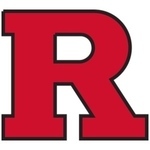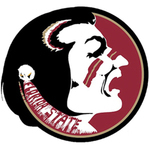Florida State University
Profile
Size
10 / 10Cost
2 / 10Selectivity
9 / 10-
Team Conference
MCLA Div. 1
-
College Type
4-year, Public
-
Campus Type

City: Medium
Student Body
Gender
- Male
- Female
Enrollment
- Full Time
- Part Time
Geography
- In-State
- Out-of-state
- Foreign
- Other
Ethnicity
- White
- Black
- Asian
- Latino
- Foreign
- Other
Other includes American Indian, Native Alaskan, Native Hawaiian or other Pacific Islander, two or more races and unknown race / ethnicity.
Coach Recruiting Interview
The Florida State Seminoles lacrosse program made history this year, being the first team in school history to have an undefeated regular season (11-0) under first year head coach and former Syracuse All-American Matt Doyle. Coach Doyle’s first freshman class had a huge impact on the team’s success this year, including the 2014 SELC Rookie of the Year Cole Lindquist (Lake Mary, FL). It should be a very exciting 2nd year under the Cuse’ alum with all 10 starters returning, which includes five SELC All-Conference selections.
What positive surprises did you see from your team this season?
The freshmen stepping up, we had 6 starting freshmen, and sometimes we had 8 on the field at one time. they are a wonderful group to coach, and they will be scary going forward.
How did your season stack up against your expectations going into the season?
We stacked up perfect, we went 11-0 in the reg season. I thought we could do that, so there weren’t any surprises. I have high hopes for this program.
Where did your team improve the most during the season and which player’s took a step forward in their game?
Our defense improved every week, they learned how to play team defense, which ultimately led us to an unbeaten record. They were the heart and soul. Will Pilkington became a true leader as the season wore on. Will has an important 2015 coming up.
Where can next year’s team improve in order to reach your ultimate goal for the season?
We can improve all over the field, but we must improve on our 6 on 6 offense. I will stress our motion offense this fall. The guys will fully understand this scheme in year 2 of it. Putting in new packages in Jan, hurt our perpetration a little bit. But this is the year where I think our offense takes off.
Which incoming players are you most excited about and how do they fit with the type of team you are building?
I’m excited by all our freshmen coming in, you know why??? Because we have 10 out of 10 starters returning from 2014. All these freshman will have to compete or playing time. It’s going to be fun to see the guys fight for a position.
Team Road Trips
Most road games for Florida State are scheduled for the Florida area against teams such as Florida, UCF, USF, and the University of Miami. The team has also traveled to Baton Rouge, Louisiana where they played LSU and Fort Worth, Texas to play Texas Christian University. Other trips have included New Orleans, Louisiana to play in the All State Lacrosse Sugar Bowl.
Recruit Commits
2018 | |||
Hometown |
Position(s) | ||
| David McCarthy | Syracuse, NY | Att | |
| Dylan Barnes | Altamonte Springs, FL | Mid | |
| Harry Baker | Columbus, OH | Att | |
| Caden Cote | Millersville, MD | Mid | |
2017 | |||
Hometown |
Position(s) | ||
| Jarett Ashley | Canton, GA | Def | |
| Will Indest | Winter Park, FL | Def | |
| Finn Swanson | Gainsville, FL | Att | |
2016 | |||
Hometown |
Position(s) | ||
| Grant Telford | Boca Raton, FL | Mid, Faceoff | |
2015 | |||
Hometown |
Position(s) | ||
| Tucker Schwarz | Tallahassee, FL | Att | |
Location
Team Videos
Where Grads Live
- Tallahassee Florida Area
- Miami/Fort Lauderdale Area
- Tampa/St. Petersburg Florida Area
- Greater Atlanta Area
- Orlando Florida Area
- Jacksonville Florida Area
- Greater New York City Area
- Washington D.C. Metro Area
- West Palm Beach Florida Area
- Greater Los Angeles Area
- San Francisco Bay Area
- Greater Chicago Area
- Sarasota Florida Area
- Panama City Florida Area
- Dallas/Fort Worth Area
Where Grads Work
- Bank of America
- US Army
- United States Air Force
- AT&T
- Wells Fargo
- State of Florida
- IBM
- Publix Super Markets
- PwC
- JPMorgan Chase
- Florida Department of Health
- US Navy
- University of Florida
- Merrill Lynch
- Miami-Dade County Public Schools
What Grads Do
- Sales
- Education
- Operations
- Entrepreneurship
- Media and Communication
- Marketing
- Information Technology
- Arts and Design
- Finance
- Research
- Community and Social Services
- Healthcare Services
- Consulting
- Administrative
- Legal
Niche Grades
Overall Experience

Student Life

Professor Rating

Academics

Athletics

Campus

Academics
Test Scores
This range represents the middle half of incoming freshman from the 25th to 75th percentile. The writing component is now optional and no longer reported. Historical writing ranges: 560 - 640 for SAT
This distribution represents incoming freshman test scores and GPA on 4.0 scale.
Admissions
Total |
Male | Female | |
| Applicants | 58,936 | 22,707 | 36,229 |
| % Admitted | 36% | 35% | 36% |
| % Admits That Enroll | 34% | 35% | 33% |
| Incoming Freshman Average GPA | 3.95 |
Admission Considerations
Required | Rec. | |
|---|---|---|
| High School GPA | ||
| High School Rank | ||
| High School Transcript | ||
| College Prep Classes | ||
| Recommendations | ||
| Demonstrate Competencies | ||
| Admission Test Scores | ||
| Other Tests (Wonderlic, etc.) | ||
| TOEFL (English proficiency) |
Majors / Programs
Degrees offered by popularity. Type = Bachelor.
Financial
Net Price
Average net price = sticker price - financial aid.
$12,568
Average net price by income for incoming freshman receiving financial aid.
Net price for students paying in-state tuition rate (public institutions).
Sticker Price
Sticker price = estimated total cost of attendance.
In-state | Out-of-state | |
On Campus | ||
| Tuition & Fees | $5,656 | $21,673 |
| Books & Supplies | $1,000 | $1,000 |
| Cost of Living | $10,780 | $10,780 |
| Personal Expenses | $5,010 | $5,010 |
| Sticker Price | $22,446 | $37,741 |
Personal expenses includes laundry, transportation, entertainment and furnishings.
Financial Aid
97% of full-time, incoming freshman receive financial aid.
Receiving Aid % | Avg. Aid Amount | |
Type of Aid | ||
| Grant or Scholarship | 96% | $9,930 |
| Federal Grants | 28% | $5,812 |
| Pell Grants | 28% | $5,464 |
| Other Federal | 12% | $818 |
| State & Local Grants | 84% | $6,313 |
| Institutional Grants | 65% | $3,944 |
| Student Loans | 29% | $6,725 |
| Federal Loans | 29% | $5,885 |
| Other Loans | 2% | $11,727 |
All financials shown for full-time, incoming freshman.
Total Amount | Per Student | |
Endowment | ||
| Financial Assets | $681 Million | $16,617 |
Value of endowment assets at fiscal year end.
Debt
Total federal debt after graduation for undergrad borrowers: $20,250.
Total cumulative student debt by percentile.
Total Principal | Monthly Payment | |
| 10 Year Repayment | $18,053 | $215 |
Most student loans have a grace period before repayment begins.
3 Year Avg. Default Rate: 3.1%
Avg. rate for colleges with lacrosse is 5.1%.
Total federal debt excludes private student loans and parent PLUS loans. Cumulative debt cohort includes 11,105 students.
Salary
Earnings 10 years after enrollment: $46,400
Earnings of former students working by percentile.
Earnings of former students who received federal financial aid. Figures shown are median.
Payback
How long until this college investment pays off: 5.05 years.
Median debt and foregone earnings divided by median earnings. Foregone earnings assumes 4 years to graduation; at this school, 68% of students graduate on time.
Team Social
Campus Safety
On Campus |
In Res. Halls |
|
|---|---|---|
Criminal Offenses |
||
| Murder | - | - |
| Negligent Manslaughter | - | - |
| Rape | 11 | 9 |
| Fondling | 2 | 1 |
| Incest | - | - |
| Statutory Rape | - | - |
| Robbery | 5 | 3 |
| Aggravated Assault | 4 | 3 |
| Burglary | 34 | 32 |
| Motor Vehicle Theft | 24 | 16 |
| Arson | 1 | 1 |
In Residence Halls are a subset of On Campus statistics. Murder includes non-negligent manslaughter.
The crime data reported by the institutions have not been subjected to independent verification by the U.S. Department of Education. Therefore, the Department cannot vouch for the accuracy of the data reported here. Statistics represent 3-year average data.
Data from The National Center for Education Statistics (NCES), the primary federal entity for collecting and analyzing data related to education.
Carnegie Classifications
Category |
Classification |
|---|---|
| Basic Classification | Doctoral Universities: Highest Research Activity |
| Undergrad Instruction | Balanced arts & sciences/professions, high graduate coexistence |
| Graduate Instruction | Research Doctoral: Comprehensive programs, with medical/veterinary school |
| Enrollment Profile | High undergraduate |
| Undergrad Profile | Four-year, full-time, more selective, higher transfer-in |
| Size and Setting | Four-year, large, primarily nonresidential |
Carnegie classifications provide a framework for evaluating comparable schools.
Similar Academic Schools
-

-

-

-

-

-

-

-

-

-

-

-

-

-

-

-

-

-

-

-

-

-

-

-

 See more college grades
See more college grades Free ACT and SAT test prep
Free ACT and SAT test prep Free SAT test prep
Free SAT test prep Net price calculator
Net price calculator Free scholarship search
Free scholarship search